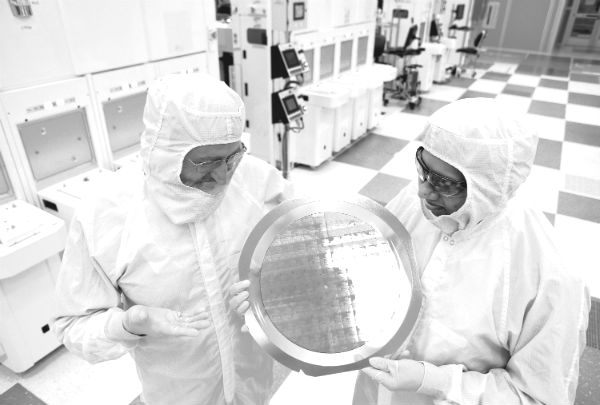IBM Reveals Functioning Version of Semiconductor Industry’s First 7nm ChipIBM Reveals Functioning Version of Semiconductor Industry’s First 7nm Chip
IBM has bolted way ahead by producing a functioning version of the semiconductor industry’s first 7-nanometer computer chip sporting about four times the power of current processors.

With Intel (INTC) just entering its 14nm chips on the market, IBM (IBM) has bolted way ahead by producing a functioning version of the semiconductor industry’s first 7-nanometer computer chip sporting about four times the power of current processors.
Don’t hold your breath to see a 7nm chip on the market anytime soon. Still, the relatively rapid pace at which the 7nm technology was developed is huge.
A partnership that included IBM, Globalfoundaries and Samsung collaborated at the State University of New York Polytechnic Institute’s Colleges of Nanoscale Science and Engineering (SUNY Poly CNSE), to produce a working version of the chip, which could result in the ability to place more than 20 billion transistors on a fingernail-sized piece of silicon to power everything from smartphones to spacecraft.
The collaboration is tied to IBM’s pledge a year ago to commit some $3 billion to chip research and development over the next five years.
“For business and society to get the most out of tomorrow’s computers and devices, scaling to 7nm and beyond is essential,” said Arvind Krishna, IBM Research senior vice president and director.
“That’s why IBM has remained committed to an aggressive basic research agenda that continually pushes the limits of semiconductor technology,” he said. “Working with our partners, this milestone builds on decades of research that has set the pace for the microelectronics industry, and positions us to advance our leadership for years to come.”
Servers powering data centers typically deploy 22nm and 14nm processors but the IBM, Globalfoundaries and Samsung consortium said 7nm technology could deliver at least a 50 percent power/performance improvement for next generation mainframe and high-end systems to power the Big Data, cloud and mobile era. It took Intel years to move from 22nm to the more efficient and faster 14nm chips.
The 7nm technology is considered vital to meet computing’s future processing demands, including the cloud, big data, mobile, cognitive computing and other emerging technologies.
IBM said to achieve the higher performance, lower power and scaling benefits of 7nm technology its researchers adopted new processes and techniques, including some industry-first innovations such as Silicon Germanium (SiGe) channel transistors and Extreme Ultraviolet (EUV) lithography integration at multiple levels.
About the Author
You May Also Like


